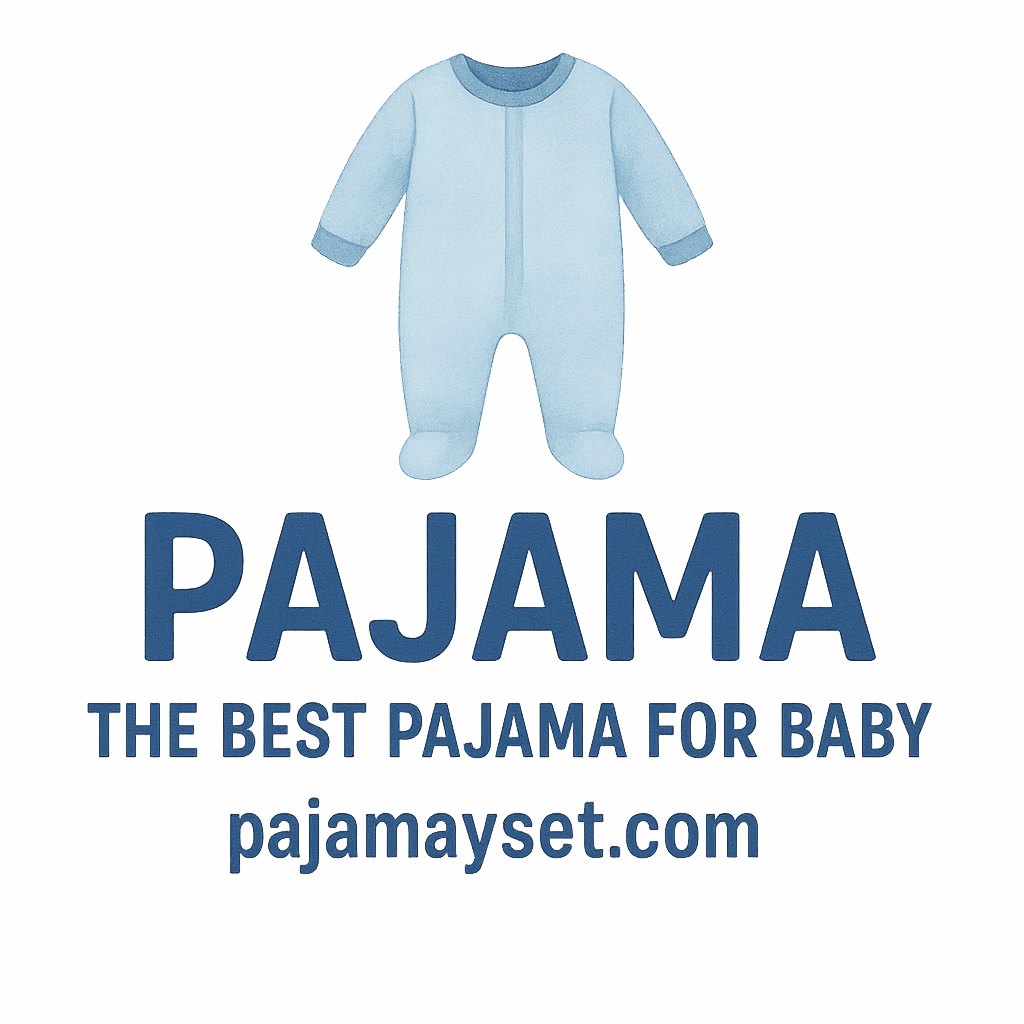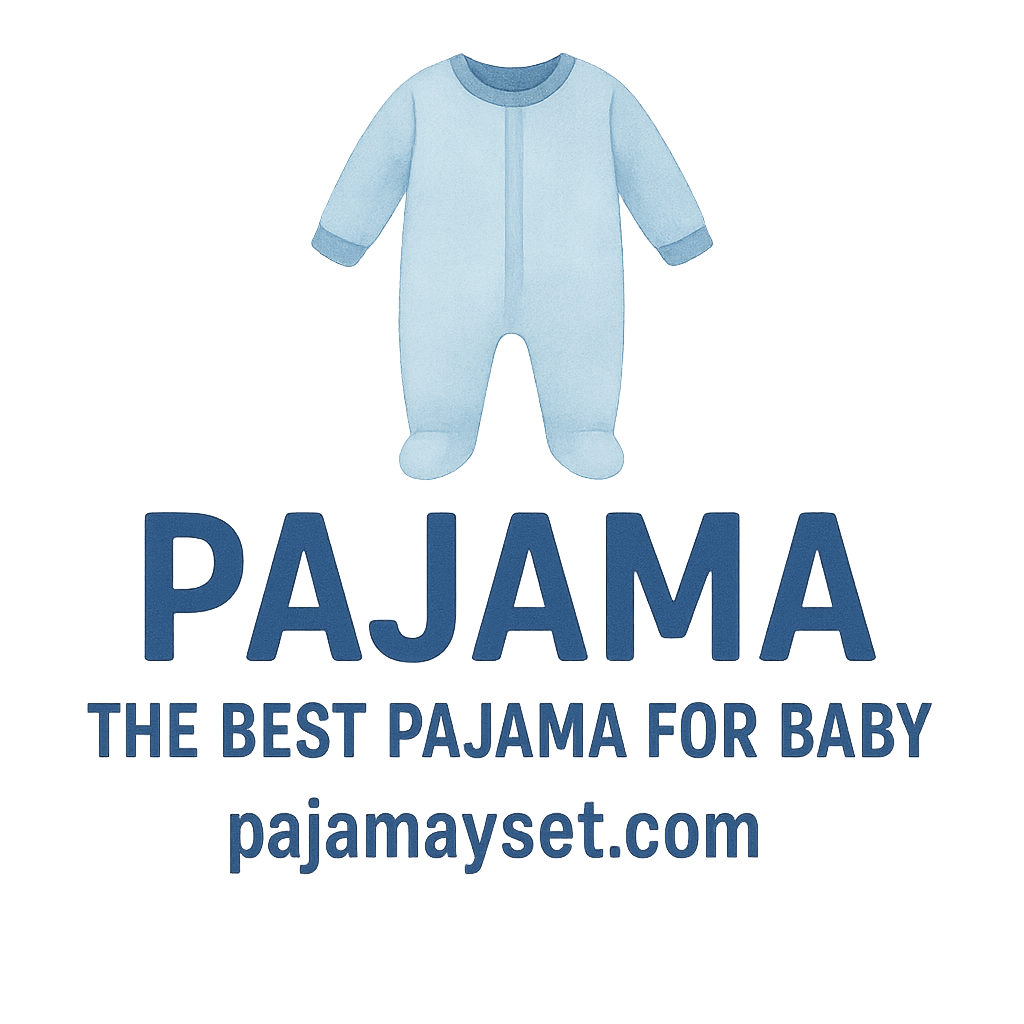Why Pajama Fabric Quality Matters for Babies
When it comes to dressing babies, comfort, safety, and practicality are always the top priorities for parents. Baby pajamas, being the clothes they wear while they sleep, are especially important. The fabric of these pajamas plays a vital role in your baby’s comfort and skin health. Babies have sensitive skin that is more prone to irritation, rashes, or allergic reactions. Choosing the right fabric can ensure that your baby sleeps peacefully, while avoiding any harm.
Unfortunately, not all pajama fabrics are created equally. Some materials might look cute or seem inexpensive, but they might not be the best choice for your baby. Here’s what you need to know when selecting pajamas to avoid poor-quality fabrics that could cause problems.
What Makes Pajama Fabric Suitable for Babies?
The ideal baby pajama fabric should meet a few essential criteria: softness, breathability, safety, durability, and comfort. Fabrics that tick all the boxes help keep your baby cozy while reducing the risk of skin irritations, discomfort, or overheating. Here’s what to look for in quality fabrics:
Importance of Fabric for Baby’s Skin
A baby’s skin is thinner and more sensitive than that of an adult. It’s important to select fabrics that are gentle and non-irritating. Soft, breathable materials like cotton and organic fabrics are typically the safest choices. Avoid rough or synthetic fabrics that might cause discomfort or allergic reactions.
Safety Considerations for Baby Pajamas
Baby pajamas should be made from materials that are not only gentle on the skin but also safe in terms of design. Always check for choking hazards such as loose buttons, zippers, or other accessories that could harm your baby during sleep.
8 Signs of Poor Quality Pajama Fabric to Avoid for Babies
1. Harsh and Scratchy Texture
A fabric that feels rough to the touch is never a good sign, especially when it comes to baby pajamas. Baby skin is ultra-sensitive, and any harsh textures can cause irritation, rashes, or discomfort. Pajamas made from fabrics that are too stiff or have a coarse texture can lead to your baby tossing and turning all night.
Why Smoothness Matters
Smooth fabrics ensure that your baby’s skin doesn’t rub against anything that might cause irritation. Fabrics like cotton, bamboo, and some polyester blends are soft and gentle, making them ideal choices for pajamas.
What Harsh Fabrics Can Cause
Fabrics that feel rough can cause chafing, itching, or even rashes. Babies might struggle to fall asleep, and the discomfort could lead to more serious skin conditions in the long run.
2. Low Breathability
Breathability is crucial in any fabric, but it’s even more important when it comes to pajamas for babies. Fabrics that trap moisture or don’t allow air circulation can cause overheating, sweating, and discomfort.
How Breathability Affects Comfort
Breathable fabrics like cotton allow air to flow freely, helping your baby stay cool and dry. Non-breathable materials, on the other hand, can make your baby feel hot and uncomfortable, increasing the risk of a restless night.
Materials that Aren’t Breathable
Synthetic materials, like nylon or polyester, are often less breathable. While they may be cheaper, they are not ideal for a baby’s delicate skin, especially during warmer months.
For more details about breathable fabrics and how they work, check out our guide on pajama materials.
3. Risk of Choking Hazards (Buttons, Zippers, and Other Trims)
While a cute button or zipper might seem harmless, these accessories can actually pose a serious safety risk to babies. Babies explore the world by putting things in their mouths, and any loose trim or accessories could end up being a choking hazard.
Safety Concerns with Buttons and Zippers
Check if the pajama has small buttons, zippers, or other decorations that can detach easily. These small parts can be chewed or swallowed, causing choking or other dangerous situations.
Choosing Baby Pajamas Without Dangerous Trims
Look for pajamas that are free from small detachable parts or, if they do have such features, make sure they are securely attached and meet safety standards. For more on safe baby clothing options, visit our baby safety page.
4. Chemical Treatment and Harsh Dyes
Many low-quality fabrics are treated with harsh chemicals or dyes to improve their appearance or longevity. These chemicals can irritate your baby’s skin, especially if they have sensitive skin or allergies.
The Risks of Chemical Overload in Pajamas
Some chemicals used in fabric treatment may lead to allergic reactions, skin rashes, or other issues. It’s essential to opt for fabrics that are free from harmful chemicals like formaldehyde or heavy dyes.
Opting for Organic Fabrics and Safe Dyes
Organic cotton, bamboo, and other natural fabrics are often free from harsh chemicals. Choose baby pajamas that are labeled as “OEKO-TEX Standard 100” certified or “organic” to ensure the fabric has been treated without harmful chemicals. You can learn more about organic baby pajamas on our buying reviews page.

5. Fabrics that Lack Stretch or Give
Baby pajamas need to provide some flexibility to allow your baby to move comfortably while sleeping. Fabrics that are too stiff or do not have any stretch can make it difficult for your baby to move freely.
Why Comfort and Flexibility Are Key
Comfortable, stretchy fabrics such as cotton-spandex blends allow your baby to shift positions during sleep, helping them to feel more comfortable throughout the night.
How Stiff Fabrics Affect Your Baby’s Movement
Stiff or rigid fabrics can limit your baby’s movement, leading to discomfort or even disrupted sleep. Babies need to move freely, especially as they start to roll over or shift positions.
If you’re looking for the best flexible fabrics for baby sleepwear, visit our style and design page.
6. Fabrics That Shrink After Washing
It’s common for fabrics to shrink a little after washing, but pajamas that shrink too much can become too tight or uncomfortable for your baby. Pre-shrunk fabrics are a safer bet for ensuring the pajamas retain their size after repeated washes.
The Importance of Pre-Shrunk Fabrics
Pre-shrunk fabrics are designed to avoid excessive shrinking, helping the pajamas stay the right size even after frequent washing.
What to Look For in Washing Instructions
Check the care label before purchasing baby pajamas. Follow the washing instructions carefully to maintain the size and softness of the fabric. For more tips on fabric care, check out our article on seasonal pajamas.
7. Fabrics That Are Too Thin or See-Through
Baby pajamas should offer full coverage to protect your baby and keep them warm during sleep. Fabrics that are too thin or see-through can lead to uncomfortable nights or even exposure to the elements if worn outside.
Why Thickness Matters in Pajama Fabrics
A slightly thicker fabric provides more insulation and coverage, ensuring your baby stays cozy throughout the night. However, the fabric should still be breathable enough to prevent overheating.
Choosing Pajamas with the Right Weight and Coverage
Look for pajamas that provide full coverage without being excessively bulky. Fabrics like cotton and flannel are great choices because they provide warmth and coverage without being too heavy. To explore the best seasonal fabrics, visit our seasonal pajama guide.
8. Non-Hypoallergenic Fabrics for Sensitive Skin
Babies with sensitive skin need fabrics that won’t irritate or cause allergic reactions. Fabrics that aren’t hypoallergenic could lead to rashes, itching, or other skin problems.
Identifying Materials That Can Cause Allergic Reactions
Some fabrics, especially synthetic ones, can trigger allergic reactions. Always choose hypoallergenic materials like organic cotton, which is gentle on sensitive skin.
How to Choose Hypoallergenic Baby Pajamas
Look for pajamas labeled as “hypoallergenic” or “sensitive skin-friendly.” Fabrics like bamboo and organic cotton are naturally hypoallergenic, making them excellent choices for babies with sensitive skin. You can find more recommendations on hypoallergenic fabrics on our experts page.
Conclusion: How to Choose the Best Pajama Fabric for Your Baby
When choosing pajamas for your baby, it’s important to focus on the quality of the fabric. Avoid harsh, scratchy, non-breathable, or chemically treated materials that could harm your baby’s delicate skin. Instead, opt for soft, breathable, hypoallergenic, and safe fabrics to ensure your baby sleeps soundly and comfortably. Remember to consider the material’s stretch, durability, and safety features like buttons and zippers to make the best choice for your little one.
FAQs
1. What Fabrics Are Best for Baby Pajamas?
Cotton, bamboo, and organic fabrics are great options for baby pajamas because they are soft, breathable, and gentle on sensitive skin.
2. How Can I Tell if Pajamas Are Safe for My Baby?
Look for pajamas without small buttons or zippers that could pose a choking hazard. Additionally, check the fabric for certifications like “OEKO-TEX Standard 100” for chemical-free textiles.
3. Should I Choose Organic Fabrics for Baby Pajamas?
Yes, organic fabrics are typically free from harmful chemicals and dyes, making them a safer option for babies with sensitive skin.
4. Are Buttons on Baby Pajamas Safe?
Buttons can pose a choking hazard, so it’s best to choose pajamas without small, detachable parts or with securely attached buttons.
5. Can Low-Quality Fabric Affect My Baby’s Sleep?
Yes, poor-quality fabrics that are rough, non-breathable, or chemically treated can make your baby uncomfortable and disrupt their sleep.
6. What Are the Risks of Wearing Non-Breathable Fabrics?
Non-breathable fabrics can cause your baby to overheat, leading to sweating, discomfort, and potential health risks.
7. How Do I Care for Baby Pajamas to Maintain Their Quality?
Follow the care instructions on the label, and wash pajamas in cold water to preserve their softness, shape, and size.


